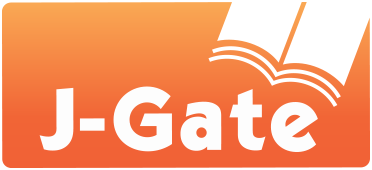Perceptions and Attitudes towards Blended Learning for English Courses: A Case Study of English-majored Students at Thu Dau Mot University
DOI:
https://doi.org/10.54855/acoj.231414Keywords:
blended learning, students’ perceptions, students’ attitudesAbstract
During the COVID-19 pandemic, blended learning (BL) has become the new normal for higher education. This study conducts a detailed review of the literature and benefits of BL in the context of English as a Foreign Language (EFL) education, exploring the perceptions of English-majored students towards BL courses in English courses at Thu Dau Mot University and analyzing the negative attitudes towards BL from the learners' viewpoints. The respondents of this study are 165 undergraduate students majoring in English at Thu Dau Mot University's Faculty of Foreign Languages. The data are collected using a questionnaire to assess students' opinions and unfavorable attitudes towards BL in two principal domains. The writers use both statistical and content analyses to get a deeper comprehension of students' responses. The findings imply that students appreciate the convenience and flexibility of BL, which is more beneficial than one direction delivering knowledge as conventional learning or virtual learning. The results also indicate the improvement of students' English language abilities regarding BL mode in English courses. In the other domain, there are also unfavorable attitudes, mainly about cheating, a lack of interaction between lecturers and learners, and slow internet connection.
References
Akbarov, A., Gönen, K., & Aydoğan, H. (2018). Students' attitudes toward blended learning in EFL context. Acta Didactica Napocensia, 11(1), 61–68. https://doi.org/10.24193/adn.11.1.5
Akkoyunlu, B., & Soylu, M. . (2008). A Study of Student's Perceptions in a Blended Learning Environment Based on Different Learning Styles. Journal of Educational Technology & Society, 11(1), 183–193. http://www.jstor.org/stable/jeductechsoci.11.1.183
Al-Shaer, I. (2013). Effects of a blended learning module on EFL students' attitudes in an introductory reading course in Al-Quds open university setting. International Journal of Language Learning and Applied Linguistics World, 3(4), 224–242.
Alhawiti, M. M. (2011). Faculty perceptions about attributes and barriers impacting the diffusion of online education in two Saudi universities (Order No. 3453898). Available from ProQuest Central. (868276692). https://www.proquest.com/dissertations-theses/faculty-perceptions-about-attributes-barriers/docview/868276692/se-2
Almasaeid, T. F. (2014). The effect of using blended learning strategy on achievement and attitudes in teaching science among 9th grade students. European Scientific Journal, 10(31), 133–145. https://doi.org/10.19044/esj.2014.v10n31p
Banditvilai, C. (2016). Enhancing students language skills through blended learning. Electronic Journal of e-Learning, 14(3), 223–232. https://academic-publishing.org/index.php/ejel/issue/view/212
Barrot, J. S., Llenares, I. I., & Del Rosario, L. S. (2021). Students' online learning challenges during the pandemic and how they cope with them: The case of the Philippines. Education and Information Technologies, 26(6), 7321–7338. https://doi.org/10.1007/s10639-021-10589-x
Beetham, H. (2013). Designing for active learning in technology-rich contexts. In Rethinking pedagogy for a digital age (pp. 55-72). Routledge. https://doi.org/10.4324/9780203078952-14
Bendania, A. (2011). Teaching and learning online: King Fahd university of Petroleum and Minerals (KFUPM) Saudi Arabia, case study. International Journal of Arts & Sciences, 4(8), 223-241.
Blankson, J., & Kyei-Blankson, L. (2008). Nontraditional students' perception of a blended course: Integrating synchronous online discussion and face-to-face instruction. Journal of Interactive Learning Research, 19(3), 421-438.
Bliuc, A. M., Goodyear, P., & Ellis, R. A. (2007). Research focus and methodological choices in studies into students' experiences of blended learning in higher education. The Internet and Higher Education, 10(4), 231–244. https://doi.org/10.1016/j.iheduc.2007.08.001
Bonk, C. J. (2009). The World is Open: How Web Technology Is Revolutionizing Education. EdMedia: World Conference on Educational Media and Technology, 2009(1), 3371–3380. http://dx.doi.org/10.1002/9781118269381
Bonk, C. J., & Graham, C. R. (2012). The handbook of blended learning: Global perspectives, local designs. John Wiley & Sons.
Chang, V., & Fisher, D. L. (2003). The validation and application of a new learning environment instrument for online learning in higher education. In Technology-rich learning environments: A future perspective (pp. 1–20). World Scientific Publishing Company. https://doi.org/10.1142/9789812564412_0001
Chisnall, P. M. (1997). Marketing planning for services. Journal of the Market Research Society, 39(4), 627-628. https://link.gale.com/apps/doc/A20224458/AONE?u=anon~be61f622&sid=googleScholar&xid=861a3dc2
Dennis, N. K. (2013). Integration of a blended e-learning application for teaching English at a local university in Thailand. AsiaCALL Online Journal, 7(1). Retrieved from https://www.asiacall.info/acoj/index.php/journal/article/view/132
Garrison, D. R., & Kanuka, H. (2004). Blended learning: Uncovering its transformative potential in higher education. The Internet and higher education, 7(2), 95-105. https://doi.org/10.1016/j.iheduc.2004.02.001
Ghazizadeh, T., & Fatemipour, H. (2017). The effect of blended learning on EFL learners' reading proficiency. Journal of Language Teaching and Research, 8(3), 606-614. https://doi.org/10.17507/jltr.0803.21
Harris, L. R., & Brown, G. T. (2010). Mixing interview and questionnaire methods: Practical problems in aligning data. Practical Assessment, Research, and Evaluation, 15(1), 1–19. https://doi.org/10.7275/959j-ky83
Hoang, T. D. ., Phan, T. L., & Le, H. P. (2021). Non-English Major Students' Perceptions Towards TOEIC Online Learning and Testing. AsiaCALL Online Journal, 12(5), 114-128. Retrieved from https://www.asiacall.info/acoj/index.php/journal/article/view/88
Hoang, T. T. D. & Ngo, T. T. T. (2022). Factors Characterizing the E-learning Experience of High School Students. AsiaCALL Online Journal, 13(3), 22-35. https://doi.org/10.54855/acoj.221333
Ja'ashan, M. M. N. H. (2015). Perceptions and attitudes towards blended learning for English courses: A case study of students at University of Bisha. English Language Teaching, 8(9), 40-50. https://doi.org/10.5539/elt.v8n9p40
Jacobs, G. M., & Ivone, F. M. (2020). Infusing cooperative learning in distance education. TESL-EJ, 24(1), 1-15.
Ju, S. Y., & Mei, S. Y. (2018). Perceptions and practices of blended learning in foreign language teaching at USIM. European Journal of Social Sciences Education and Research, 12(1), 170-176. https://doi.org/10.26417/ejser.v12i1.p170-176
Kasraie, N., & Alahmad, A. (2014). Investigating the reasons institutions of higher education in the USA and Canada utilize blended learning. Mevlana International Journal of Education, 4(1), 67-81. https://doi.org/10.13054/mije.13.68.4.1
Kember, D., McNaught, C., Chong, F. C., Lam, P., & Cheng, K. F. (2010). Understanding the ways in which design features of educational websites impact upon student learning outcomes in blended learning environments. Computers & Education, 55(3), 1183-1192. https://doi.org/10.1016/j.compedu.2010.05.015
Le, T. T. M. (2021). A Case Study of Students' Views on Effective Online Learning. AsiaCALL Online Journal, 12(5), 24-33. https://asiacall.info/acoj/index.php/journal/article/view/73/41
Lesiak-Bielawska, E. (2012). The impact of blended learning on teaching English for vocational purposes. Glottodidactica, 39(1), 47-56. https://doi.org/10.14746/gl.2012.39.1.5
Lightbown, P. M., & Spada, N. (2021). How Languages Are Learned 5th Edition. Oxford University Press.
Lin, Y. W., Tseng, C. L., & Chiang, P. J. (2016). The effect of blended learning in mathematics course. Eurasia Journal of Mathematics, Science and Technology Education, 13(3), 741-770. https://doi.org/10.12973/eurasia.2017.00641a
Liu, M. (2013). Blended learning in a university EFL writing course: Description and evaluation. Journal of Language Teaching & Research, 4(2), 301-309. https://doi.org/10.4304/jltr.4.2.301-309
Maio, G. R., Haddock, G., & Verplanken, B. (2018). The psychology of attitudes and attitude change. Sage.
McCradie, J. (2003). Does IT matter to higher education? Educause Review, 38(6), 15-22.
Miyashita, H. (2021). Successive Action Research to Develop the Higher Order Thinking of EFL Learners Through Discussion Forums. AsiaCALL Online Journal, 12(5), 77-99. Retrieved from https://www.asiacall.info/acoj/index.php/journal/article/view/85
Miyazoe, T., & Anderson, T. (2010). Learning outcomes and students' perceptions of online writing: Simultaneous implementation of a forum, blog, and wiki in an EFL blended learning setting. System, 38(2), 185-199. https://doi.org/10.1016/j.system.2010.03.006
Pappas, C. (2015, October 8). The History of Blended Learning. The History of Blended Learning - eLearning Industry. Retrieved December 9, 2022, from https://elearningindustry.com/history-of-blended-learning
Rachman, L. A., Sudiyono, S., & Phonix, E. (2021). The blended learning implementation of ELT based on teachers'and students'perspective in new normal condition of COVID-19. PROJECT (Professional Journal of English Education), 4(3), 457-468. https://doi.org/10.22460/project.v4i3.p457-468
Rahim, M. (2019). The use of blended learning approach in EFL education. International Journal of Engineering and Advanced Technology, 8(5C), 1165-1168. https://doi.org/10.35940/ijeat.e1163.0585c19
Šafranj, J. (2013). Using information technology in English language learning procedure: Blended learning. Procedia-Social and Behavioral Sciences, 83, 514-521. https://doi.org/10.1016/j.sbspro.2013.06.099
Taghizadeh, M., & Hajhosseini, F. (2021). Investigating a blended learning environment: Contribution of attitude, interaction, and quality of teaching to satisfaction of graduate students of TEFL. The Asia-Pacific Education Researcher, 30(5), 459-469. https://doi.org/10.1007/s40299-020-00531-z
Teik, O. C. . (2016). Open distance learning: Delivering linguistics and education courses in a blended learning environment. AsiaCALL Online Journal, 11(1), A1-17. Retrieved from https://www.asiacall.info/acoj/index.php/journal/article/view/13
Throne, K. (2003). Blended Learning: How to Integrate Online and Traditional Learning. Korgan Page.
Tosun, S. (2015). The effects of blended learning on EFL students' vocabulary enhancement. Procedia-Social and Behavioral Sciences, 199, 641-647. https://doi.org/10.1016/j.sbspro.2015.07.592
Tran, T. P. & Nguyen, T. T. A. (2022). Online education at Saigon University during the COVID-19 pandemic: A survey on non-English major college students' attitudes towards learning English. AsiaCALL Online Journal, 13(2), 1-20. https://doi.org/10.54855/acoj.221321
Wickersham, L. E., & McGee, P. (2008). Perceptions of satisfaction and deeper learning in an online course. Quarterly Review of Distance Education, 9(1), 73–83.
Willging, P. A., & Johnson, S. D. (2009). Factors that influence students' decision to drop-out of online courses. Journal of Asynchronous Learning Networks, 13(3), 115–127. https://doi.org/10.24059/olj.v13i3.1659
Williams, N. A., Bland, W., & Christie, G. (2008). Improving student achievement and satisfaction by adopting a blended learning approach to inorganic chemistry. Chem. Educ. Res. Pract., 9(1), 43–50. https://doi.org/10.1039/b801290n
Wu, P.- hsiang N., & Chuang, W.- ting. (2013). L2 CMC Motivation in Task-based Computer-mediated Communications. AsiaCALL Online Journal, 7(1). Retrieved from https://www.asiacall.info/acoj/index.php/journal/article/view/140
Yang, Y., & Cornelius, L. F. (2004). Students' Perceptions towards the Quality of Online Education: A Qualitative Approach. Association for Educational Communications and Technology Annual Meeting, 2004(1), 861-877.
Yoon, S. Y., & Lee, C. H. (2010). The perspectives and effectiveness of blended learning in L2 writing of Korean university students. Multimedia Assisted Language Learning, 13(2), 177-204. https://doi.org/10.15702/mall.2010.13.2.177
Zhang, W., & Zhu, C. (2018). Comparing learning outcomes of blended learning and traditional face-to-face learning of university students in ESL courses. International Journal on E-Learning, 17(2), 251-273.
Zhu, Y., Au, W., & Yates, G. C. (2013). University students' attitudes toward online learning in a blended course. Australian Association for Research in Education.
Downloads
Published
How to Cite
Issue
Section
License
Copyright (c) 2023 Tran Thanh Du, Nguyen Minh Nam Anh

This work is licensed under a Creative Commons Attribution 4.0 International License.
License
Authors retain copyright and grant the journal the right of first publication with the work simultaneously licensed under a Creative Commons Attribution 4.0 International License that allows others to share the work with an acknowledgment of the work's authorship and initial publication in this journal.
Authors are able to enter into separate, additional contractual arrangements for the non-exclusive distribution of the journal's published version of the work (e.g., post it to an institutional repository, in a journal or publish it in a book), with an acknowledgment of its initial publication in this journal.
Authors are permitted and encouraged to post their work online (e.g., in institutional repositories or on their website) prior to and during the submission process.
Copyright
The copyright of all articles published in the acoj remains with the Authors, i.e. Authors retain full ownership of their article. Permitted third-party reuse of the open access articles is defined by the applicable Creative Commons (CC) end-user license which is accepted by the Authors upon submission of their paper. All articles in the acoj are published under the CC BY-NC 4.0 license, meaning that end users can freely share an article (i.e. copy and redistribute the material in any medium or format) and adapt it (i.e. remix, transform and build upon the material) on the condition that proper attribution is given (i.e. appropriate credit, a link to the applicable license and an indication if any changes were made; all in such a way that does not suggest that the licensor endorses the user or the use) and the material is only used for non-commercial purposes.











